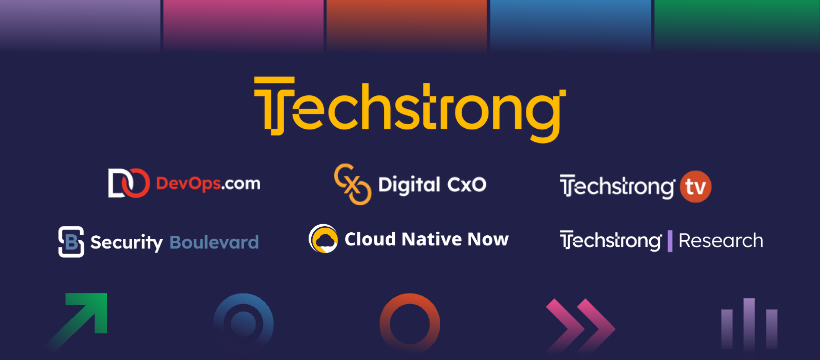Cloud migration stands as a crucial pillar in digital transformation as more and more enterprises seek to enhance operational efficiency, agility, and innovation. The cloud services market is projected to soar from $10.2 billion in 2023 to $29.2 billion by 2028, reflecting a staggering growth of nearly 25% year over year. This surge underscores the growing recognition of cloud migration as a strategic imperative for businesses aiming to stay competitive.
Cloud migration offers significant business value by enabling enterprises to harness advanced technologies, streamline operations, and achieve cost efficiencies as the transition to cloud platforms reduces operational costs while enhancing scalability and flexibility. For instance, adopting cloud-native solutions can unlock up to $1 trillion in business value by optimizing resource use and reducing infrastructure, labor, and energy expenses.
Most organizations have caught on to these benefits. Today, more than half of all corporate data exists in the cloud, and according to McKinsey, 65 percent of IT leaders expanded their cloud budget since the pandemic. According to Flexera, Nearly 89% of organizations have adopted a multi-cloud strategy, with 59% using multiple public clouds. Additionally, cloud spending continues to rise, with nearly 29% of organizations spending over $12 million annually on public cloud and 22% on SaaS. The average healthcare and manufacturing organization, in particular, doubled their expected cloud expenditures between 2020 and 2024, followed closely by a 1.8x increase for companies in the banking and public sectors.
Key trends and challenges in cloud modernization
Several trends are shaping the cloud modernization landscape:
- Hybrid and multi-cloud strategies: Enterprises are increasingly adopting hybrid and multi-cloud strategies to optimize costs, enhance data security, and improve performance. This approach allows businesses to leverage the strengths of both public and private clouds while avoiding vendor lock-in.
- AI and machine learning integration: The integration of AI and machine learning into cloud environments is revolutionizing data analytics, customer service, and operational efficiency. These technologies enable predictive analytics, automated decision-making, and enhanced customer experiences.
- Increased focus on cybersecurity: As cyber threats evolve, enterprises are prioritizing robust security measures within their cloud environments. Advanced encryption, access controls, and continuous monitoring are critical to safeguarding sensitive data.
Despite its numerous advantages, cloud migration presents several challenges that enterprises must navigate. For instance, the integration of legacy systems often poses significant hurdles due to compatibility issues and the necessity for substantial re-engineering, necessitating a blend of off-the-shelf solutions and bespoke technology development. Furthermore, the financial implications of cloud migration can be daunting, with unexpected expenses related to data transfer, storage, and additional services.
To mitigate these challenges, effective strategies are essential. These can include:
A clear cloud migration strategy: A strategy should outline business objectives, migration timelines, expected outcomes, and budget. A thorough assessment of IT assets and data is crucial for informed decision-making.
The right cloud environment: Selecting a cloud service provider involves evaluating their security measures, performance capabilities, and cost structures. Providers like AWS, Azure, and Google Cloud offer advanced tools and services that can cater to diverse business needs.
Workload prioritization: Not all workloads are suitable for immediate migration. Enterprises should assess and prioritize workloads based on complexity, interdependencies, and business impact to ensure a smooth transition.
Robust security and compliance measures: Continuous monitoring, encryption, and access controls are essential to maintaining data integrity and compliance with industry standards.
Testing, monitoring, and management: Ongoing testing and monitoring are vital to ensure that migrated workloads perform as expected. Addressing performance issues promptly can prevent disruptions and optimize efficiency.
Overcoming cloud migration challenges with software intelligence
Software intelligence technology can play a pivotal role in facilitating cloud migration. It automatically analyzes and understands custom-built software systems, offering MRI-like precision in revealing their inner workings—something invaluable in identifying potential issues and optimizing the migration process.
For example, CAST Highlight acts as an automated control tower, providing actionable insights across all applications, ensuring that enterprises can make informed decisions throughout their migration journey. CAST Imaging, on the other hand, offers a living knowledge base of an application’s architecture, aiding in seamless integration and ongoing management.
This can help digital leaders surmount common cloud migration challenges by addressing several key issues. First, legacy system integration is made more manageable through detailed insights provided by software intelligence solutions, guiding the re-engineering process to ensure compatibility with cloud environments. At the same time, cost management becomes more efficient with automated analysis and optimization tools that identify inefficiencies and potential savings, enabling enterprises to manage their cloud budgets more effectively. Lastly, skill shortages are mitigated as software intelligence reduces the dependency on specialized skills through the automation of complex analysis and the provision of clear, actionable insights, making it easier for existing teams to manage the migration.
Cloud modernization is a transformative journey that requires careful planning, robust strategies, and the right technological support. By leveraging software intelligence, enterprises can navigate the complexities of cloud migration, ensuring a smooth transition and unlocking the full potential of cloud computing. As the market continues to grow, embracing these practices will be essential for staying competitive and driving innovation in the digital era.









SHARE